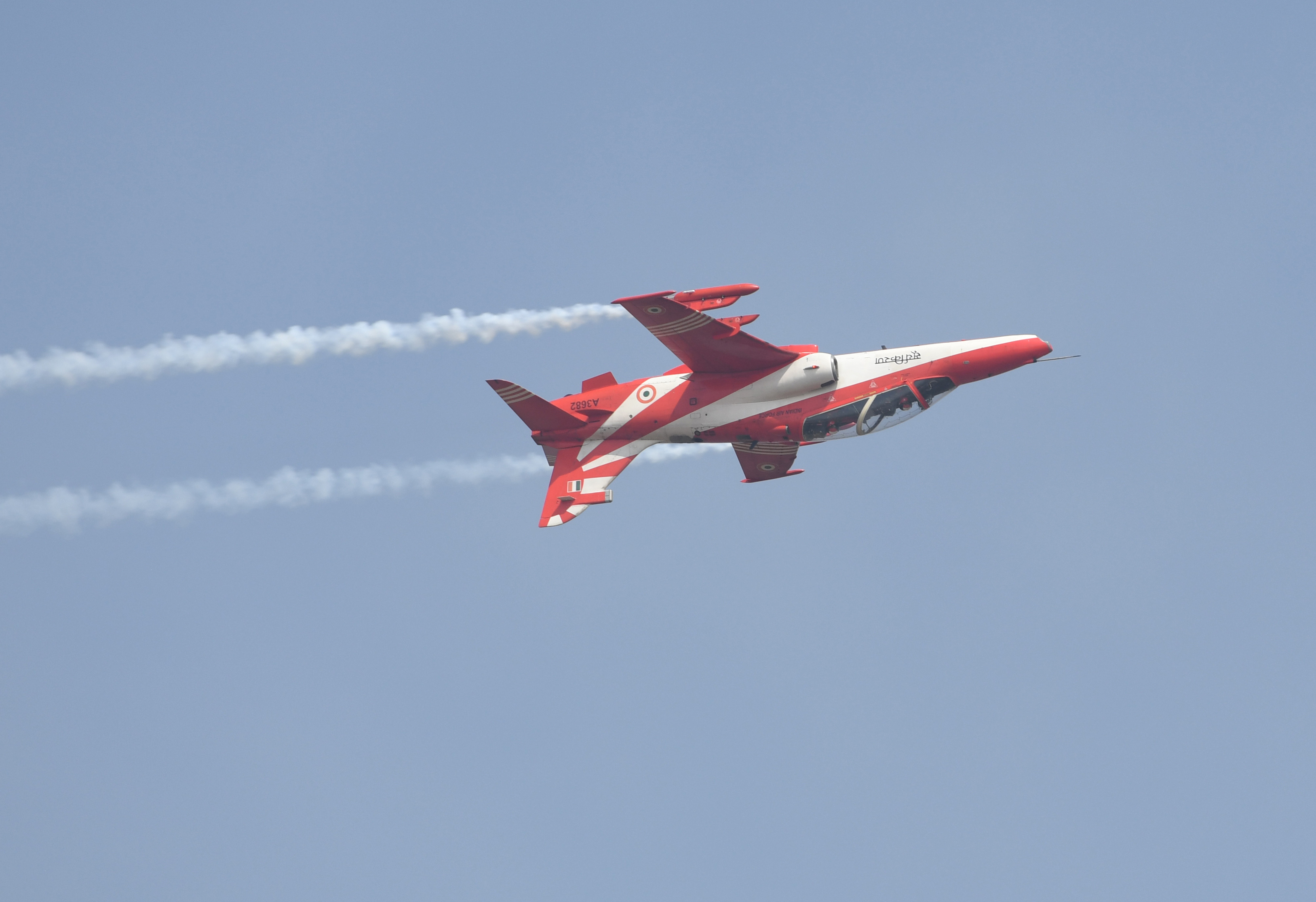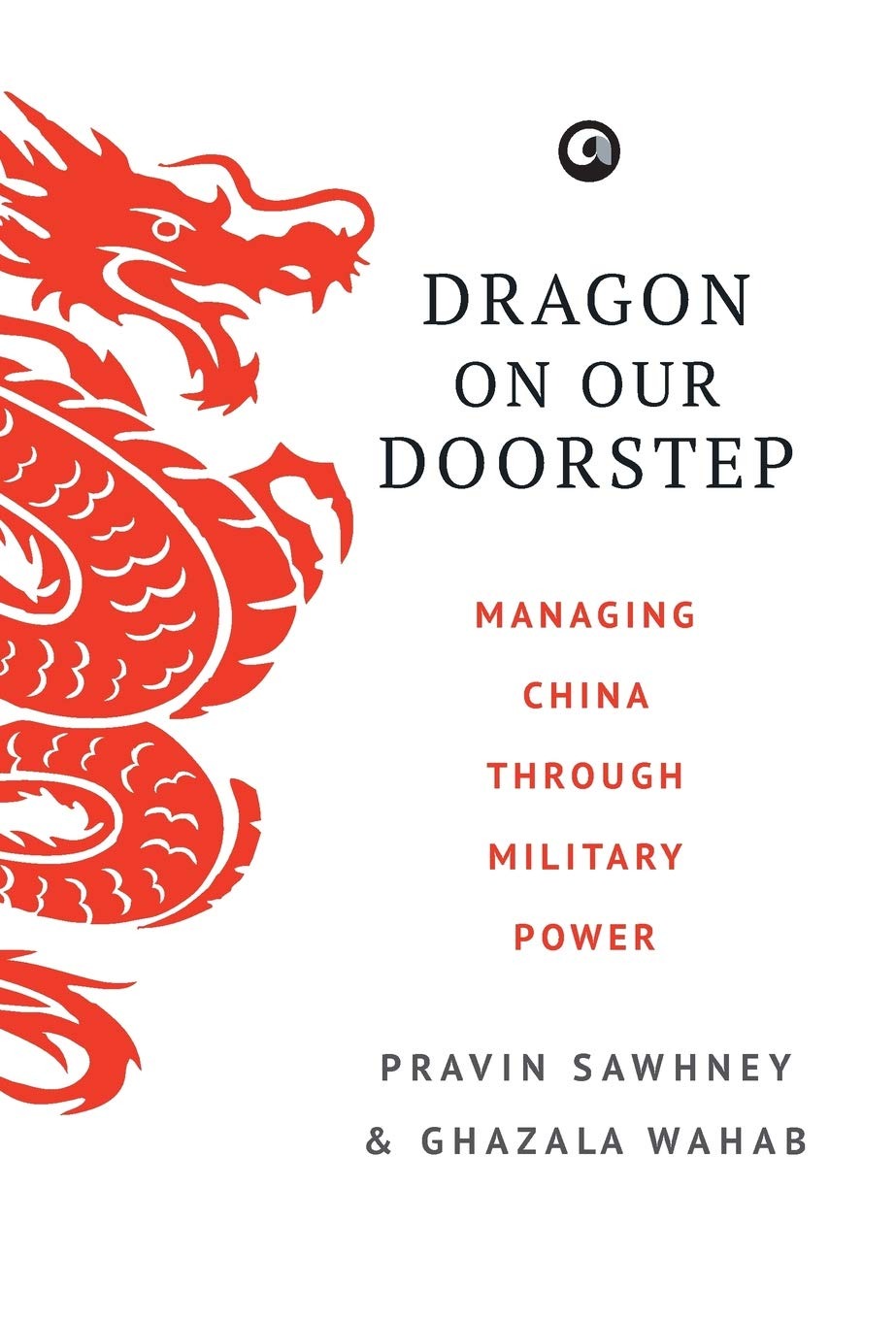Inspire, Not Intimidate
MoD’s ‘Year of Reforms’
can help rethink military training philosophy
 Cdr Shrikumar Sangiah (retd)
Cdr Shrikumar Sangiah (retd)
Author Shirley Jackson’s acclaimed short story, The Lottery, first published in The New Yorker magazine in 1948, is a searing critique of society’s blind adherence to its practices and traditions. Set in a small fictional village, the story describes an annual lottery held by the villagers to select a person, from among them, to be stoned to death---a ritual upheld without question, for generations, in the belief that it leads to a bountiful harvest.
The villagers unquestioning
acceptance of the lottery, despite the brutality it leads to, highlights the
dangers of conformity, groupthink, and resistance to change. The story serves
as a warning against the debilitating power of unexamined practices that
persist in societies (and organisations) and the need to critically examine and
discard such practices.
Or consider the more
every day, real-world example of the QWERTY keyboard. The QWERTY keyboard was
designed in the 1860s for mechanical typewriter---to prevent jamming by spacing
out frequently used keys. Despite the advent of digital keyboards, where the
problem of jamming is irrelevant, the QWERTY layout continues to hold sway.
Alternative layouts like Dvorak, which optimise typing efficiency have been
proposed, but have failed to gain acceptance due to entrenched habits and the
instinctive human resistance to change. Societal and institutional inertia
perpetuate outdated practices even when better alternatives exist.
It is a consequence
of such institutional inertia that the Indian military’s training philosophy,
rooted in colonial-era traditions, continues to guide military training even though
it is outdated and out of alignment with the ministry of defence’s (MoD) vision
outlined for the military when it designated 2025 as the ‘Year of Reforms’.
The MoD, early this year, declared 2025 as the ‘Year of Reforms’—a strategic move to modernise the country’s armed forces and prepare them for future challenges. The MoD’s ‘Year of Reforms’ initiative aims to enhance the capabilities of the army, navy, and air force in joint operations, promote the induction of new technologies, and improve the overall combat readiness of the military.

LEARNING THE ROPES Naval Training Team at Indian Naval Academy, Ezhimala
India’s
defence minister Rajnath Singh, who chaired the meeting that led to the
announcement, emphasised that the ‘Year of Reforms’ would be a landmark step in
the modernisation journey of the Indian armed forces. The defence minister
expressed hope that the ‘Year of Reforms’, ‘will lay the foundation for unprecedented
advancements in the country’s defence preparedness, thus preparing to ensure
the security and sovereignty of the nation amidst the challenges of the 21st
century.’
Military
Training Philosophy
Historically, the training philosophies of the world’s
militaries (including India’s), have emphasised fear-induced discipline,
unthinking obedience, and hierarchical rigidity—philosophies ill-suited for
modern militaries. The persistence of fear-based training, in militaries,
reflects an adherence to an obsolete training philosophy that ignores
contemporary psychological understanding and altered societal expectations.
This
outdated approach to training stifles initiative, adaptiveness, and
inventiveness—essential skills
outlined in the MoD’s vision for the year of reforms for military personnel
expected to master the challenges of modern conflicts increasingly involving
cyber warfare, Artificial Intelligence (AI), and integrated operations.
Military training,
especially during the initial induction and basic professional training
periods, is characterised by its reliance on the fear-based approach. Training
officers and drill instructors shout, reprimand, and use the threat of
punishment in their efforts to transform raw trainees into professionally
competent and disciplined officers and soldiers.
The approach is
rooted in the belief that ‘tough love’ instils resilience and obedience. This,
despite evidence that this practice is at odds with the philosophical
principles of human flourishing and the altered demands of modern military
service. The fear-based approach risks producing officers and soldiers lacking
in the intrinsic drive to excel and the intellectual agility and sustained
physical fitness and mental resilience required for the complexities of modern
warfare. The persistence of fear-based training in India’s military academies
reflects, besides institutional inertia, a romanticised view of ‘toughness’
despite evidence that intrinsic motivation better serves the needs of the
modern military.
Origins of Fear-based Training
Fear-based training emerged from the practical
necessities of early militaries. The early armies, often consisted of
conscripts with limited education and motivation, who needed to be quickly
trained and sent off to man units on the frontline. For this purpose, fear was
an efficient tool to break down individual resistance and enforce uniformity,
particularly in large, heterogeneous groups of recruits.
Later, the Prussian
model, which evolved during the 18th and 19th centuries and influenced modern
military training, further emphasised absolute obedience, standardised drills,
and strict discipline to ensure dependability on the battlefield.
Industrial-era warfare, with its emphasis on mass mobilisation and standardised
tactics, entrenched this approach as the militaries prioritised unhesitating
obedience in the recruits over their long-term development.
While the approach
was effective for producing soldiers for waging traditional battles of previous
eras, the model is not suited for today’s dynamic, technology-driven conflicts,
where officers must think critically, adapt quickly, and lead diverse teams. By
reimagining training and emphasising autonomy, competence, and initiative—the
Indian military can nurture leaders who thrive not through intimidation—which
only yields fleeting results—but out of a deep-seated, inner desire to excel.
Literature and films
provide us with instances that illustrate the shortcomings of fear-based
military training and its negative impact on individual autonomy. In Erich
Maria Remarque’s semi-autobiographical 1929 novel, All Quiet on the Western
Front (considered the greatest war novel of all time by many), the
protagonist, Paul Bäumer, endures brutal training under Corporal Himmelstoss,
whose fear-driven methods rely on humiliation and punishment. Himmelstoss’s
tactics foster resentment rather than genuine loyalty and intrinsic motivation.
Readers will also
recall the Hindi film Lakshya (2004), in which the film’s protagonist,
Karan Shergill, initially struggles to cope with the rigid, fear-inducing
discipline of military training. His early failures stem from a lack of
intrinsic motivation, as the military’s punitive approach fails to ignite his
sense of purpose. Only when he finds personal resolve does he transform into a
competent officer. Both the examples, although based in fiction, serve to
illustrate the flaws of fear-based training. Military training that fosters
psychological insecurity hinders the development of self-motivated,
intellectually agile officers—underscoring the need to transition to a training
philosophy rooted in empowerment and purpose.
Military Training in India
The Prussian model significantly influenced training
in the world’s militaries. India’s military training philosophy, in
institutions like the National Defence Academy (NDA) and the other service
academies, inherited through British colonial practices, still bears hallmarks
of the Prussian model. The model’s persistence in Indian military training
reflects, both a historical legacy and myriad cultural factors.
During the British
Raj, the Indian Army was shaped according to European military traditions, that
emphasised drill-based discipline and fear-driven compliance to manage recruits
drawn from diverse linguistic and cultural backgrounds. However, the model’s
limitations vis-a-vis the needs of the modern-day battlefield, underscore a
pressing need for alternatives to produce well-rounded military leaders
equipped to handle the challenges of today’s wars.
Post-independence, the Indian armed forces continued to prioritise rigid compliance---to build a cohesive, professional force capable of addressing internal and external security challenges. Intense regimentation remains common during training, aimed at ‘toughening’ trainees for the rigours of service. Undeniably, this approach has produced a disciplined cadre of officers and soldiers, as seen in the successes during the conflicts of 1971, the Kargil War, etc.
TOUGH LOVE Soldiers undergoing training
at Army Training Command, Shimla
However, this
training philosophy which prioritises compliance over initiative, leads
officers to view even initiatives for their further education and skills
enhancement, as mandatory hurdles rather than opportunities for growth.
Similarly, physical fitness is pursued only to qualify annual fitness tests,
with many officers and soldiers neglecting sustained training due to a lack of
an inner drive.
Additionally,
cultural factors specific to India—excessive deference to authority and
organisational hierarchy—have aided the persistence of the Prussian model.
While the model continues to form the basis for military training in India, no
studies have been undertaken to ascertain if it aligns with the aspirations of
the current generation of trainees drawn from an India that is, socio-economically
and culturally, vastly different from the India of the last century.
Fear-based Training
Fear-based training is rooted in the belief that
intense pressure and punishment turn out soldiers capable of withstanding the
stresses of combat. Newer military capabilities and newer ways of waging wars,
require officers and soldiers to be critical thinkers capable of rapid
decision-making and collaboration across service divides. The persistence of
older training philosophies risks alienating younger trainees who prioritise
purpose and empowerment—leading to lower morale and poorer retention.
For the MoD’s planned
‘Year of Reforms’ to succeed, India’s military needs to speedily revise its
training philosophy. Fear-based training, with its focus on first breaking down
individuals to recast them as obedient soldiers fails to nurture the broader
competencies envisioned in the MoD’s planned reforms.
Philosophically too,
the current approach to training is at odds with the principles of
self-actualisation championed by psychologists such as Abraham Maslow. Maslow’s
hierarchy of needs posits that human motivation thrives when an individual’s
basic needs (safety, belonging) are met, allowing individuals to pursue higher
goals like self-esteem and self-actualisation. Training premised on fear, keeps
trainees in a perpetual state of psychological insecurity, causing them to
value compliance over true growth. True growth can occur only through intrinsic
motivation and not through coercion. When viewed through the lens of long-term
personal and professional development, the fear-based approach to training has
several significant drawbacks:
Suppression of
Intrinsic Motivation: Intrinsic motivation,
defined as the drive to engage in an activity for its own sake, is critical for
fostering both lifelong learning and sustained physical fitness. Fear-based
training relies on extrinsic motivators, rewards or punishments, to obtain the
desired behaviour. Studies have shown that intrinsic motivation thrives when
individuals experience autonomy. Fear-based training undermines this by
prioritising control over autonomy and compliance over initiative. As a result,
trainees complete tasks to avoid punishment rather than because they value the
skills or knowledge being imparted. Once trainees graduate and the external
pressure from the training officers and drill instructors vanishes—in the
absence of intrinsic motivation—officers begin viewing further learning as a
chore and not an opportunity for growth. Similarly, physical fitness, often maintained
under duress during training, is neglected until required for annual tests or
promotions. This reactive approach limits officers’ ability to adapt to the
evolving needs of modern warfare, where intellectual agility and physical
readiness are paramount.
Short-Term Focus: Fear-based training focuses on immediate results rather than on
fostering a mindset of continuous improvement. This creates a ‘check-the-box’
mentality, and trainees begin prioritising meeting the minimum requirements
over striving for long-term excellence. Professional development begins to be
viewed as a series of disconnected courses rather than a cohesive journey of
intellectual growth. Officers begin to learn or train just enough to clear the
required exams or pass an annual fitness test and fail to maintain a consistent
focus on self-improvement.
Psychological and
Cultural Impacts: The psychological
toll of fear-based training could also hinder the development of well-rounded
officers. A constant fear of punishment could lead to stress, burnout, or
resentment, eroding morale. Officers trained in such environments often become
risk-averse, relying on rigid adherence to protocols rather than developing the
confidence to make independent decisions. Risk aversion hinders the emergence
of leaders capable of leading the military through uncharted territories or
formulating pioneering bold strategies for tackling complex future challenges.
Today’s armed forces
require officers who are intellectually curious, professionally competent, emotionally
resilient, physically fit, and capable of leading their units in complex,
dynamic environments. The current approach to military training that stifles
individual autonomy reduces trainees to being reactive actors rather than
self-directed individuals. As a result, instead of turning out ‘whole’ men and
women (a conception that references West Point’s approach to training),
fear-based training creates a culture of extrinsic compliance, where officers
act only when compelled by external pressures.
Framework for Change
A 2020 study in Defence and Security Analysis
found that Indian officers trained in autonomy-supportive environments reported
higher engagement and resilience—suggesting that fear-based methods are no
longer effective for modern recruits. India’s military academies need to adopt
alternative models tailored to fit India’s specific cultural context. By moving
beyond the Prussian model, India’s military training academies can turn out
intellectually curious, and physically and psychologically resilient officers
who are committed to excellence—aligning with the demands of 21st-century
security challenges and the MoD’s vision for the Indian military of the future.
Military training,
therefore, needs to shift from a fear-based model to one that fosters intrinsic
motivation—encouraging officers to pursue lifelong learning and physical
fitness driven entirely by an inner motivation. This transformation can be
achieved through alternative training models drawing on modern psychological
theories, leadership principles, and best practices from both military and
civilian contexts:
Fostering Autonomy: Training must be so designed that it fosters intrinsic motivation by
giving trainees opportunities to exercise choice and take ownership of their
learning and fitness goals. For example, rather than mandating rigid course
curricula and strict schedules for physical training, instructors should only
define the required qualifying benchmarks. The trainees should then be allowed
to pick elective courses aligned with their interests. The resulting sense of
ownership will foster a deeper commitment to personal growth. Instead of
punishing a trainee for failing a fitness test, trainers should provide
feedback and additional coaching to help them improve, reinforcing a growth
mindset. To build a sense of camaraderie, rather than a hierarchical,
fear-driven dynamic, the training should incorporate mentorship and peer
support. Team-based challenges, collaborative projects, and open communication
with instructors will create a sense of autonomy and belonging, motivating
trainees to excel for themselves and for the sake of their units.
Shifting Role of
Instructors: The role of training officers
must evolve from authoritarian enforcers to mentors and facilitators. This will
require instructors to embody the qualities they seek to instil, demonstrating
a commitment to learning and fitness in their own lives. By serving as role
models, they can inspire trainees to adopt similar values. Instructors should
receive training in motivational techniques, and positive leadership.
Instructors should prioritise constructive feedback over punishment, helping
trainees identify areas for improvement. This approach will build trust,
encourage trainees to take informed risks, and learn from their failures.
Culture of Lifelong
Learning: The training ethos at military academies must embed intellectual
curiosity and a passion for lifelong learning. This can be achieved through:
- Redesigning training programmes to incorporate interdisciplinary learning—exposing trainees to diverse subjects like world/ military history, ethics, technology, and global affairs, etc. alongside traditional military training (an integral aspect of the ‘whole man’ approach to military training). For example, case studies of historical battles could be paired with discussions on leadership, ethics, or technological advancements—encouraging critical thinking.
- Senior officers who exemplify lifelong learning should serve as mentors and share freely from their experiences. Guest lectures, workshops, and informal discussions with accomplished leaders will inspire trainees to view learning as a lifelong pursuit.
- Providing easy access to learning resources, such as online courses, libraries, and professional development programmes. Existing partnerships with universities should be expanded to offer, to the widest set of officers and soldiers, opportunities to pursue advanced certifications and degrees while in active service.
- Self-directed learning should be incentivised by not mandating specific in-service courses and instead offering incentives, such as career advancement or recognition, for officers who pursue voluntary learning. For example, an officer who completes a course in data analytics could receive credits toward promotions, reinforcing the value of self-directed education.

AERODYNAMICS IAF’s Advanced Jet Trainer Hawk
Physical Fitness as Lifestyle: To encourage sustained physical fitness, training must shift from physical fitness being a test that needs to be cleared to it being a lifestyle to be embraced. Training should incorporate diverse and engaging physical activities to appeal to different interests and reduce monotony. Trainees could be encouraged to explore activities that align with their preferences, making fitness enjoyable rather than it being an obligation. Training should include knowledge on nutrition, mental health, recovery, etc. highlighting the connection between physical fitness and overall well-being. Militaries could use digital tools, such as fitness apps or wearable devices, to help track progress and set personal goals. Such measures would encourage officers to maintain a lifelong commitment to their fitness.
Culture of Excellence:
To sustain intrinsic motivation, militaries must
cultivate a culture that celebrates excellence and personal growth. This can be
achieved through establishing awards or recognition for officers who
demonstrate exceptional commitment to learning and physical fitness. To further
enable the shift toward intrinsic motivation, promotion criteria need to be
revised to prioritise continuous learning and fitness alongside traditional
metrics like operational performance. Training programmes should be
periodically assessed to ensure that they align with the goal of fostering
intrinsic motivation. Feedback from trainees and the training staff can help
identify areas for improvement, ensuring that the system keeps evolving to meet
changing needs.
Challenges
Implementing the proposed change framework which,
admittedly, comes across as being utopian and naively idealistic, requires
overcoming several challenges. First, any attempt to change a deeply ingrained
military culture that values tradition and hierarchy, will face stiff
resistance from senior leaders and instructors accustomed to fear-based
methods. In organisations with entrenched systems, dissent tends to be
suppressed and those challenging the status quo tend to be isolated or even
evicted. Gradual implementation, starting with pilot programs in select
military academies, can help demonstrate the effectiveness of the new approach
and gradually win the naysayers and sceptics over.
Second, resource
constraints, such as funding for new training materials or instructor
development, will pose barriers. Again, the military could address this
challenge by opting for a graded approach to implementation.
Finally, the
successful implementation of this change will require patience. Measuring the
success of intrinsic motivation programmes requires long-term evaluation, as
outcomes like lifelong learning and fitness manifest over years. Metrics like
officer retention rates, voluntary course enrolment, and fitness test
performance will serve as initial indicators of progress that will help, the
leaders shepherding the change, win and maintain the belief of everyone
involved in the change initiative.
Studying examples of
successful implementation of motivation-driven training by other military
organisations provides encouragement and reason to place trust in the viability
and efficacy of the suggested change. The US Navy’s, SEAL training programme,
while physically and mentally demanding, emphasises teamwork, resilience, and
personal growth over punishment. SEAL candidates are encouraged to develop a
sense of purpose and camaraderie, which sustains their commitment to learning
and fitness long after training ends. Examples from outside the military, from
corporate leadership programmes, such as those at Google and General Electric,
which prioritise employee autonomy and skill development, leading to higher
engagement and innovation, also provide the necessary encouragement to pursue
the suggested change.
Endnote
The reliance on fear-based training in military
academies, while effective for short-term compliance, fails to imbue personnel
with the intrinsic motivation needed to pursue personal and professional growth
throughout their careers. By redesigning training to emphasise autonomy, integrating
continuous learning and sustained fitness into military culture, and redefining
the role of instructors, militaries can turn out self-motivated officers and
soldiers who embody the ‘whole man’ ideal.
This transformation
requires a cultural shift, supported by institutional policies, mentorship, and
continuous evaluation. By investing in these changes, the military can nurture
leaders who are prepared for the challenges of modern warfare. By boldly
redefining its training ethos, India’s military could forge a legacy of
excellence, with motivated officers and soldiers driving the success of the MoD’s planned reforms and position
India’s military as a global exemplar of a force that thrives on inspiration,
not intimidation.
Subscribe To Force
Fuel Fearless Journalism with Your Yearly Subscription
SUBSCRIBE NOW
We don’t tell you how to do your job…
But we put the environment in which you do your job in perspective, so that when you step out you do so with the complete picture.








